26th Annual Education and Equipment Conference
Friday, February 24, 2023
7:45 a.m. - 4:30 p.m.
Free Certificates of Attendance for all breakout sessions. CEU’s available for several sessions. Please see class descriptions for details.
Exhibit Hall Hours
8:00 a.m. - 2:30 p.m.
Lunch Sponsors:Permobil & Invacare/Motion ConceptsHappy Hour Sponsors: Coloplast, Hollister, & Golden Technologies
Opening Remarks
Opening Remarks
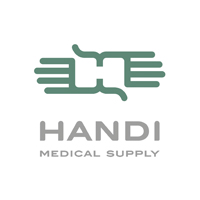 Handi Medical Supply
Handi Medical SupplyBreakout Session 1
Effective Communication Strategies
 Jenna Fink
Jenna FinkSeating & Positioning Strategies for Long Term Care and Memory Care
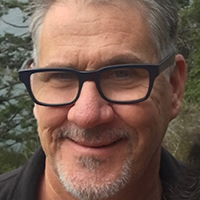 Marc Schaefer, OT/L, RN
Marc Schaefer, OT/L, RNWheelchair Positioning in Long Term Care is a multi-variable balancing act. It encompasses attention to cognitive, psychosocial as well as physical components. It involves the resident, their families and multiple staff entrusted in their care. Seating systems in long term care settings where memory impairment is prevalent need to be global, wholistic and flexible in an interdependent and ever-changing environment. This course is designed to give clinicians tools and strategies for effective evaluations and seating system implementation for the continuum of memory care. It will compare components of common styles of wheelchairs available and how they be most effectively used in a memory care setting.
Objectives:
- Identify 2 specific seating components for fall reduction with varying wheelchair designs and models
- Identify 2 seating mobility options to address memory induced motor impairment and wandering
- Identify two strategies for effective implementation and communication of new seating systems on nursing care units with multiple nursing caregivers
Identifying Airway Clearance Therapy Needs with Your Patients
 Bobby Lankford
Bobby LankfordOverview of symptoms and conditions that would benefit from HFCWO. Review of coverage insurance coverage criteria, types of HFCWO devices and benefits of HFCWO therapy.
Objectives:
- Discuss the symptoms that would indicate need for advanced airway clearance therapy
- Know what key indicators to look for to identify these patients within the chart notes
- Understand advanced airway clearance therapy devices and how they benefit patients
Drivability: Features & Options to Promote Function & Independence PART 1
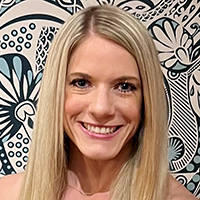 Alex Chesney, OTR, ATP/SMS
Alex Chesney, OTR, ATP/SMSDrivability is defined as the degree of smoothness and steadiness of acceleration. When considering drivability in the terms of power wheelchair management, it is not only an extremely important factor for an end user's safety in controlling the power wheelchair, but a huge consideration in the satisfaction and comfort of using the device. When evaluating an end user for a power mobility device, much consideration is given to the mobility base, seating components, and drive controls, but there are other features to consider as well. This course will look at these important additional features including programming options, suspension, and tracking technology.
Objectives:
- Participants will be able to distinguish two advantages of each drive wheel configuration type that will facilitate environmental access for the end user
- Participants will distinguish three drive parameters used to improve control and safety when managing the power wheelchair
- Participants will be able to list two reasons tracking technology should be considered for users of Switch drive controls
Flexibility is the Name of the Game
 Chris Blomquist, RN
Chris Blomquist, RNBreakout Session 2
Use of Novel Silicone Backed Fabric (NSBF) to Reduce Peri-incision Tension and Support Healing of Complex Wounds
 Jan Chevrette, FNP-C, CWOCN, CFCN
Jan Chevrette, FNP-C, CWOCN, CFCNEnhancing Function: The Power of Power Assist Devices
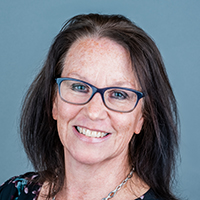 Brenlee Mogul-Rotman, OT, Reg. (Ont.), ATP/SMS
Brenlee Mogul-Rotman, OT, Reg. (Ont.), ATP/SMSManual wheelchair propulsion can be inherently difficult, and research shows that the longer a person propels a manual wheelchair for functional mobility the greater incidence of pain and repetitive injury; the resulting pain can limit function, reduce participation, and limit life roles of individuals who use manual wheelchairs for their functional mobility. Power assist devices present the opportunity to reduce pain and improve function of clients who utilize manual wheelchairs for mobility. By understanding the different types of power assist devices available; having the ability to identify the appropriate client; and knowing how to apply power assist devices based on clinical presentation, therapists will be able to improve function, reduce pain, and increase quality of life of the people they serve.
Objectives:
- List 3 reasons why a manual wheelchair rider may benefit from a power assist device.
- Differentiate between three different types of power assist devices and the benefits and considerations for each.
- Discuss how power assist can improve functional outcomes and participation.
- Identify 3 components of a power assist device evaluation, delivery/training for successful outcomes.
Why Weight Matters in Manual Wheelchair and Component Selection for Pediatrics
 Christie Hamstra, PT, MSPT, DPT, ATP
Christie Hamstra, PT, MSPT, DPT, ATPCOPD and Hospital Readmissions
 Scott Barth, RRT, RPSGT
Scott Barth, RRT, RPSGTObjectives:
- Understand the prevalence, and Impact of COPD on the healthcare system
- The Hospital Readmission Reduction Program and the impact of COPD
- Understand the current process and transition of a person suffering from COPD from home to admission to home again.
- Identify key components that comprise an effective and proactive COPD monitoring program
- Review current literature
Drivability: Features & Options to Promote Function & Independence PART 2
 Alex Chesney, OTR, ATP/SMS
Alex Chesney, OTR, ATP/SMSLunch & Exhibits in Vendor Hall
Breakout Session 3
Building Trust: A Strategic Look at Two Models
 Steven D Jackson, MD, MBA
Steven D Jackson, MD, MBAIn a time where building trust is more crucial than ever, we will examine two specific models aimed at strategically building trust with clients and patients.
Objectives:
- Participants will become familiar with two specific models that aim to build trust
- Participants will learn the clinical and non-clinical applications for each model
- Participants will learn the difference between quality and equity
Scared of Wounds? What you Need to Know to Mitigate Risk
 Chris Blomquist, RN
Chris Blomquist, RN Alanna Valadez, MSN, NP-C, WOCN
Alanna Valadez, MSN, NP-C, WOCN24-7 Posture Care Management: A Key to Optimal Seating Outcomes?
 Tamara Kittelson, MS, OTR/L, ATP/SMS
Tamara Kittelson, MS, OTR/L, ATP/SMSThis presentation provides a broad overview of therapeutic positioning around the clock. With focus on the influence of lying or sitting and standing posture, participants will gain awareness of lying posture as a key component of successful seating outcomes.
Objectives:
- List three elements that influence posture deviations in wheelchair users
- Compare and contrast destructive vs protective/preventive postures
- List three human orientations in the order of development
Tilting the Odds: Manual Tilt to Improve Rehabilitation Outcomes
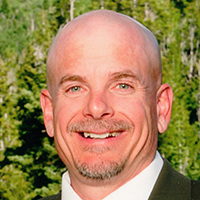 Curt Prewitt, MS, PT, ATP
Curt Prewitt, MS, PT, ATPThis presentation will explore the research supporting the use of tilt. Topics will include: how changes in seat angle affect posture and pressure distribution, seat height and angle characteristics that impact self-propulsion, the relationship between independent mobility and incidence of pressure ulcers, and how changes in seat angle can influence activities of daily living. The clinical justification and documentation requirements for Medicare reimbursement of the E1161 code will be outlined, and participants will be educated on options to achieve the clinical benefits of manual tilt while enabling self-propulsion and transport.
Objectives:
Upon completion of this course participants will be able to:
- Cite 3 aspects of propulsion affected by seat height and changes in seat angle
- Cite 2 elements of the relationship between independent mobility and incidence of pressure ulcers
- Provide 2 examples of how changes in seat angle can impact pressure and affect posture
- Provide 2 examples of how changes in seat angle can affect participation in activity specific ADLs
- Produce documentation that clinically supports Medicare reimbursement of E1161 code
Documentation LIFE Preserver PART 1
 Dan Fedor
Dan FedorDo you feel like you are drowning in documentation? Are you spending more time writing and rewriting documentation for health insurers such as Medicare, Medicaid, Medicare Advantage Plans and Private Insurances than actually treating patients? The amount of documentation required is overwhelming and there just doesn't seem to be enough time during the day to give them what health insurers expect. In this interactive two-hour session participants will gain insight into health insurance plans documentation requirements for mobility products and related accessories. The instructor, a former Director at Medicare, will share the internal thought process of health insurance plans which to outline what they need in order to approve a claim for qualified patients.
Objectives:
- Identify key requirements that must be clearly documented in the wheelchair evaluation with consideration of health insurance reimbursement
- Recognize how health insurers think and how to speak (write) their language so they understand what you see in your patient
- Connect the dots in the wheelchair evaluation to ensure your patient receives the medically necessary product in a timely manner
Breakout Session 4
Continence Management: Avoiding Complications and Providing Better Outcomes
 Deb Elings, BSN, CCM, WCC, RAC-CT, Certified PAC Trainer
Deb Elings, BSN, CCM, WCC, RAC-CT, Certified PAC TrainerPositioning for Participation & Function: 24-hour Postural Support
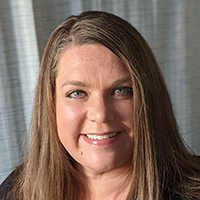 Karla Sonderland, MS, OTR/L
Karla Sonderland, MS, OTR/LA 24-hour postural care program provides for seating and mobility intervention as well as when the individual is not in the wheelchair. This session addresses options for alternative positioning, toileting, bathing and sleeping. Physiological and anatomical theoretical principles will be addressed incorporating how equipment can address an individual’s postural needs.
Objectives:
- Identify three postural positional needs throughout the day
- Identify two benefits of supported standing
- Compare and contrast sleeping positions in regards to physiological or anatomical benefits
Documentation LIFE Preserver PART 2
 Dan Fedor
Dan FedorPressure Mapping: Strategies for Today, and Emerging Technology for the Future
 Caroline Portoghese, OTR/L, ATP/SMS
Caroline Portoghese, OTR/L, ATP/SMS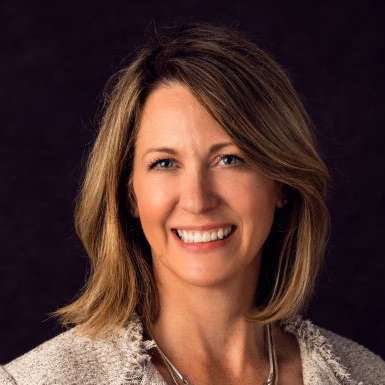 Tamara Vos-Draper, Ph.D, OTR/L, ATP/SMS
Tamara Vos-Draper, Ph.D, OTR/L, ATP/SMSPressure injury statistics have not improved like other patient safety indicators. Learn about benefits and limitations of what pressure mapping can do today and discuss emerging technology, and how it might guide technology-based strategies for managing sitting-related pressure in the future.
Objectives:
- Describe benefits and limitations of pressure mapping with today’s technology
- Participate in the clinical use of pressure mapping
- Discuss emerging technology and how it might guide technology-based strategies for managing sitting-related pressure in the future
Signs of Caregiver Stress and How to Manage It
 Valerie J. Richards, MBA, Educator & Family Coach, Therapy Dog Handler
Valerie J. Richards, MBA, Educator & Family Coach, Therapy Dog HandlerConvexity in the Post Operative Setting
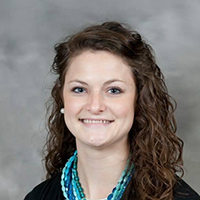 Mackenzie Bauhs, RN, BSN, CWOCN
Mackenzie Bauhs, RN, BSN, CWOCNFeel confident in using convexity after surgery. Join us for an educational presentation on this controversial topic, where we will dive into the current research published in JWOCN regarding the use of convexity in the post operative setting and consensus statements from the expert panel.
Objectives:
- Understand the history and current literature related to convexity
- Discuss use of convexity in the post operative setting
- Identify at least two statements from post operative convexity consensus paper